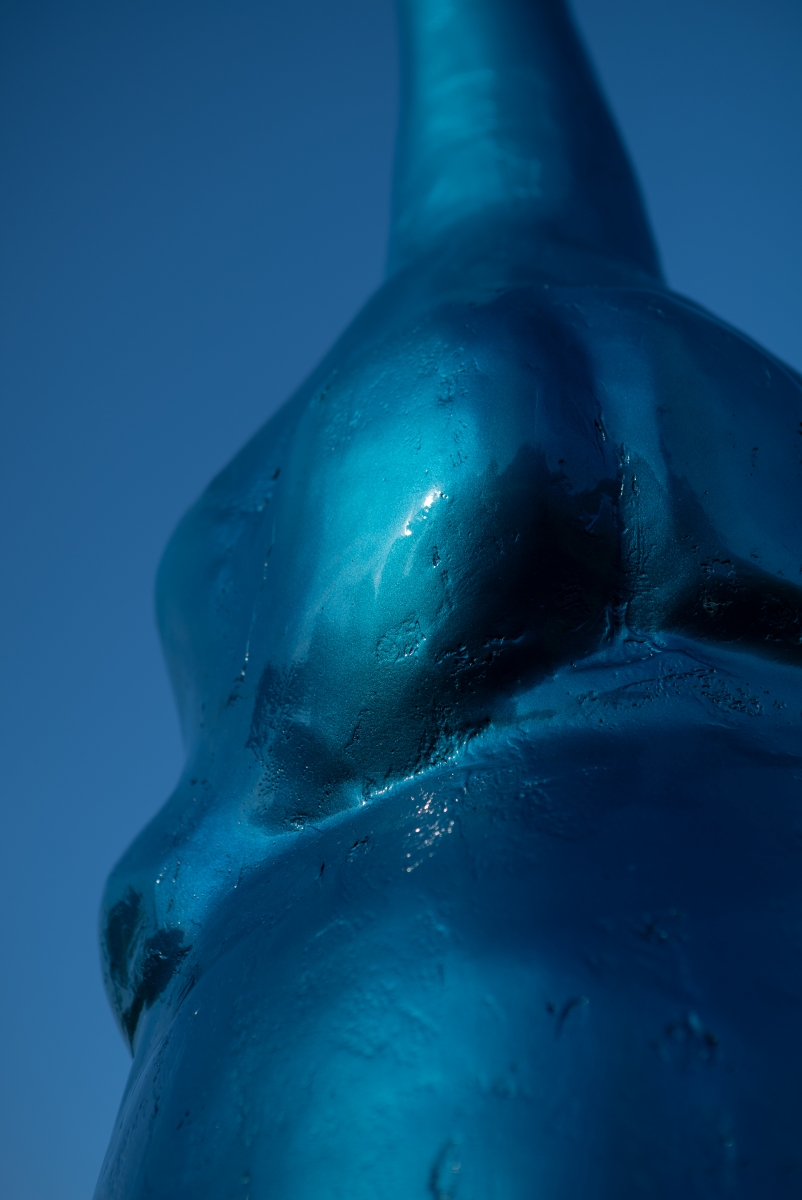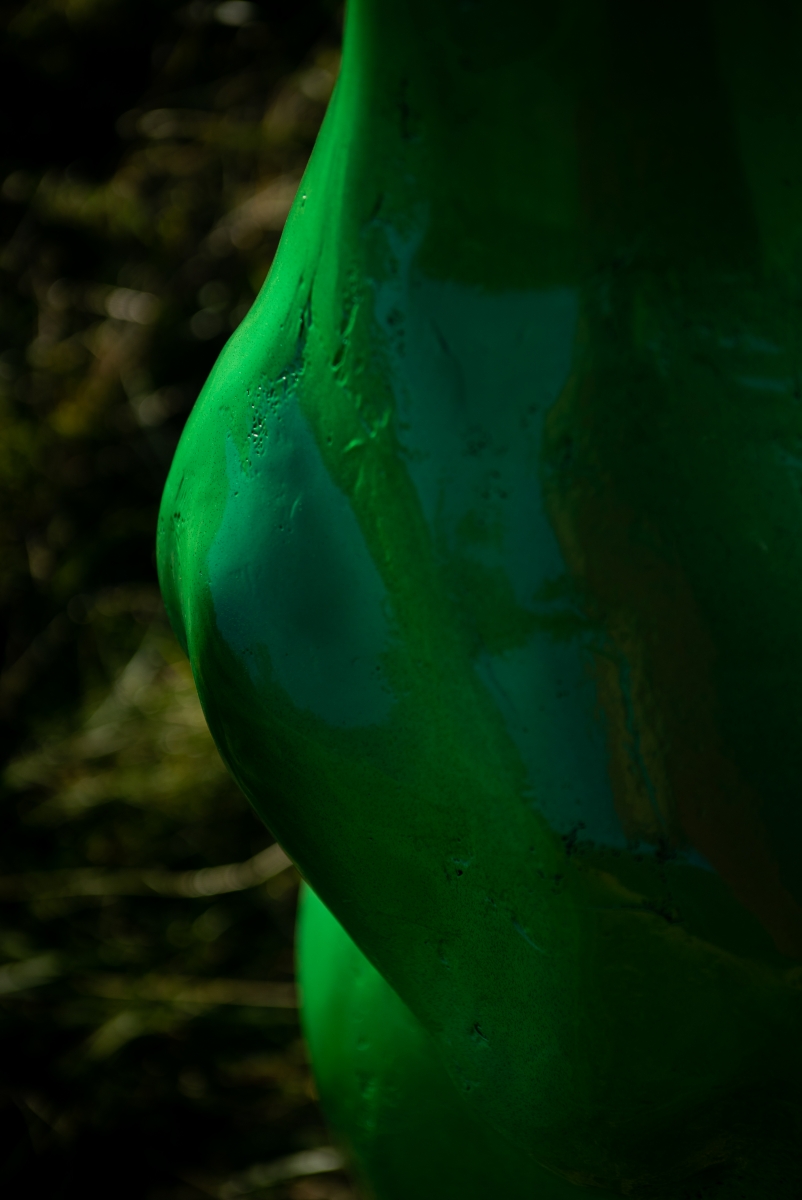Before we go to see the tall and colourful, shimmering spermatozoid/shooting star-shaped sculptures in the green field behind Rupert, Arvydas Umbrasas asks me if I have been vaccinated and sprays my legs with tick spray, pulling my socks over the hems of my trousers.
“Shooting stars with their long tails, speed, and energy load remind me of spermatozoids rushing towards the egg – the Earth.” Umbrasas’ story triggers the tiny hairs on the back of my neck as he goes on, “In the 17th century, it was believed by many researchers that spermatozoa contained a tiny, completely pre-formed human within it. Today we know that it is not true, but we still enjoy packing our wishful thinking into one image – a superhero.”
His research for Abundance – Shooting stars is framed within a larger interest in cosmic bodies and their impact on peoples’ imagination. As an aside, apparently superheroes regain popularity in times of recession. Getting a handful of meteorite at the end of a tour in the Lithuanian Museum of Ethnocosmology turned out to be a “parameter breaking experience”, imagining the age of this piece of matter resting in his palm which is older than the earth.
Stroking the outer layer of one of the sculptures, Umbrasas — his head tilted, much like theirs — recalls the intense physical labour their production entailed. The sculptures are smooth and artificial-looking, nail-polish coated; yet in the irregular details and textures (and of course in figuration), they impart an organic feel. His hand cups and dips the curves, almost affectionately.
In movies, would-be superheroes gain their powers through touch. It is by coming into close contact with an object or a force that they are transformed (and responsible!) forever. Fusing it all together, Umbrasas mentions the 2019 blockbuster Avengers: Endgame, in which the superheroes alter the universe by touching stones, the colours of which match those emitted by shooting stars as they travel, depending on their chemical compound.
In the garden, three large fluorescent tails scrape the earth. Covered in a thick coat of car paint, acquired from a garage in Vilnius that doubles up as the local motorcycle shop, these larger than life pieces are spread at a distance from each other in the garden/field.
Like spermatozoids, like shooting stars, they appear en masse to permeate the sphere, but only a few get through and become meaningful. “Abundant yet so rare meteorites are like a quality action or an idea. A singular event can drastically alter individual and societal narratives, forces to take a new course. Similarly only one in fourteen million of the ejaculated sperm reaches its goal, but once it does, it picks up a chemical signal from the egg that will help [it] to find a way forward.”
In the metallic paint used for cars and motorcycles, the added shimmer is so abundant that individual ‘glitters’ cannot be distinguished. The green, orange, and blue paints will change colours in their outdoors setting over time. As if showered in radiation, Umbrasas carefully flattened the grass around the sculptures, using his body weight and a wooden plank; the long tails suspended at the verge of touching.

Arvydas Umbrasas, Abundance – Shooting stars, 2020, Rupert. Photo: Laurynas Skeisgiela

Arvydas Umbrasas, Abundance – Shooting stars, 2020, Rupert. Photo: Laurynas Skeisgiela

Arvydas Umbrasas, Abundance – Shooting stars, 2020, Rupert. Photo: Laurynas Skeisgiela

Arvydas Umbrasas, Abundance – Shooting stars, 2020, Rupert. Photo: Arvydas Umbrasas

Arvydas Umbrasas, Abundance – Shooting stars, 2020, Rupert. Photo: Arvydas Umbrasas

Arvydas Umbrasas, Abundance – Shooting stars, 2020, Rupert. Photo: Arvydas Umbrasas






























